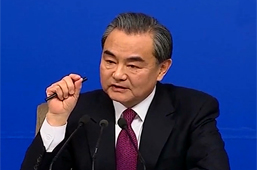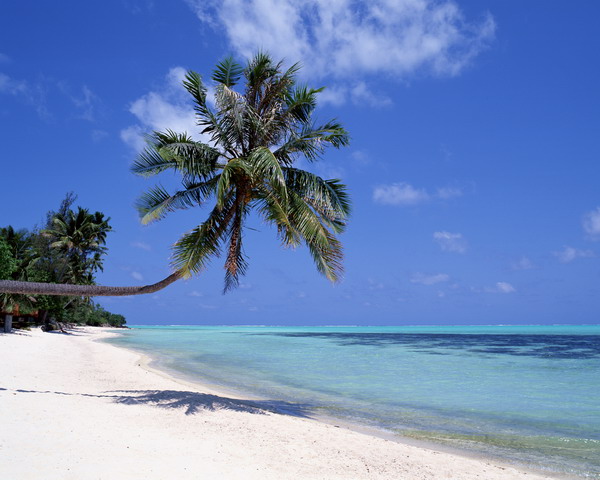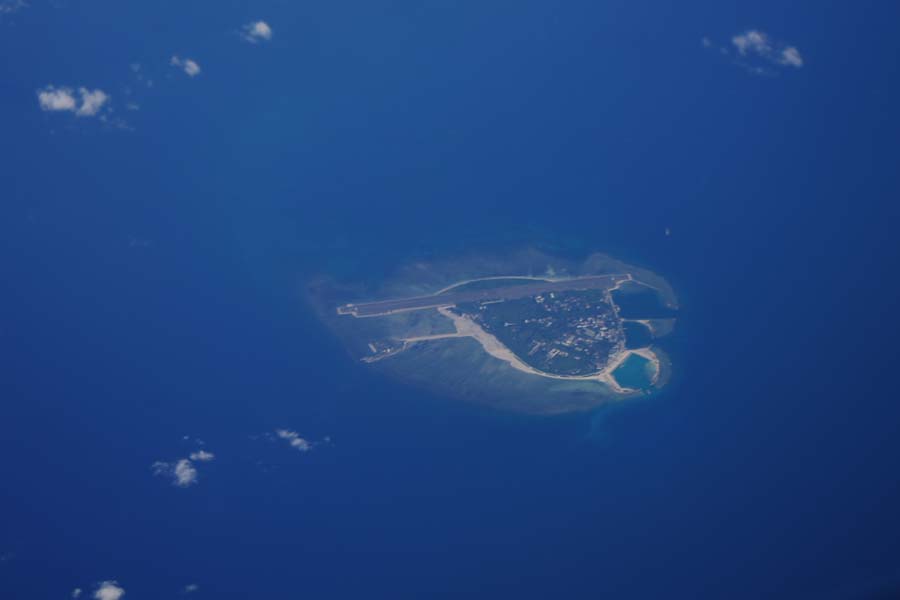Qing Dynasty(1644-1911)
The book Zhi Nan Zheng Fa (the Orthodox Principles about How to Use a Compass) compiled in the early Qing Dynasty had records about the "Wanli Changsha" and the "Wanli Shitang". Herein, the "Wanli Changsha" refers to Nansha Qundao, while the "Wanli Shitang" refers to Xisha Qundao.
In 1678AD (the 17th year of Emperor Kangxi's reign of the Qing Dynasty), the Wan Zhou Zhi (Chorography of Wanzhou) compiled by Li Yan recorded that "in Wanzhou, there are Qianli Shitang and Wanli Changsha". It demonstrated that at that time Xisha Qundao and Nansha Qundao were under the jurisdiction of Wanzhou, Qiongzhou Prefecture, Guangdong Province (in today's Wanning County and Lingshui County of Hainan Province).
1710AD-1712AD (From the 49th year to the 51st year of Emperor Kangxi's reign of the Qing Dynasty): The Chorography of Quanzhou Prefecture during the reign of Emperor Qianlong of the Qing Dynasty recorded that Wu Sheng, deputy governor of Guangdong Naval Forces once headed the naval forces to patrol the sea territory. "From Qiongya, via Tonggu, to Qizhouyang and Sigengsha, of all the surrounding three thousand li, he made the inspection tour in person". Herein, the so-called "Qizhouyang" is today's sea area around Xisha Qundao, the patrol task of which was undertaken by the Naval Forces of Guangdong.
1724AD-1817AD (from the 2nd year of Emperor Yongzheng's reign to the 22nd year of Emperor Jiaqing's reign of the Qing Dynasty): The government of the Qing Dynasty had drew Nanhai Zhudao in authoritative maps, and exercised jurisdiction over Nanhai Zhudao. Many maps such as Tian Xia Zong Yu Tu (General Map of Geography of the All-under-heaven) of Qing Zhi Sheng Fen Tu (Map of the Provinces Directly under the Imperial Qing Authority) in the year of 1724 (the 2nd year of Emperor Yongzheng's reign), the Tian Xia Zong Yu Tu (General Map of Geography of the All-under-heaven) of Huang Qing Ge Zhi Sheng Fen Tu (Map of the Provinces Directly under the Imperial Qing Authority) in the year of 1755 (the 20th year of Emperor Qianlong's reign), the Da Qing Wan Nian Yi Tong Tian Xia Quan Tu (Map of the Eternally Unified All-under-heaven of the Great Qing Empire) in the year of 1767 (the 32nd year of the Emperor Qianlong's reign), the Da Qing Wan Nian Yi Tong Di Li Quan Tu (Map of the Unified All-under-heaven of the Great Qing Empire) in the year of 1810 (the 15th year of Emperor Jiaqing's reign) and the Da Qing Yi Tong Tian Xia Quan Tu (Map of the Unified All-under-heaven of the Great Qing Empire) had universally included Nanhai Zhudao into the territory of China.
In the year of 1730 (the 8th year of Emperor Yongzheng's reign of the Qing Dynasty), the book Hai Guo Wen Jian Lu (Records of Things Seen and Heard about the Coastal Regions) by Chen Lunjiong recorded that, "to Wanzhou of Qionghai, it is called as Wanli Changsha". And in its attached map Si Hai Zong Tu (the General Map of the Four Seas), place names such as "Qi", "Shatou", "Changsha", "Qizhouyang" and "Shitang" were marked out. Herein, "Qi" and "Shatou" refers to Dongsha Qundao, "Changsha" refers to Zhongsha Qundao, "Qizhouyang" refers to Xisha Qundao, and "Shitang" refers to Nansha Qundao.
In the year 1838 (the 18th year of Emperor Daoguang's reign of the Qing Dynasty), in the book Yang Fang Ji Yao (A Summary of Coastal Defense), Nanhai Zhudao was drew and indicated in the Zhi Sheng Hai Yang Zong Tu (the General Chart of the Sea of Different Provinces). And "Jiuru Luozhou" and "Shuang Fan Shi" which referred to Xisha Qundao, were explicitly drew and indicated in Guang Dong Yang Tu (Map of the Sea of Guangdong Province) as part of China's coastal defense area.
In the year of 1841 (the 21st year of Emperor Daoguang's reign of the Qing Dynasty), in the Chorography of Qiongzhou Prefecture which was compiled by Zhang Yuesong entrusted by the magistrate of Qiongzhou Prefecture Ming Yi, it was clearly recorded that, "in Wanzhou, there are ten hundred li's Shitang and ten thousand li's Changsha, where are the most dangerous places in the ocean of Qiongzhou." The book also recorded that barracks of the assisting naval forces of Yazhou was established in the southern part of Hainan Dao. The sea areas over which they patrolled had gone as far as the ocean of Siam and Champa (the central part of today's Vietnam).
In the year of 1842 (the 22nd year of Emperor Daoguang's reign of the Qing Dynasty), entrusted by Lin Zexu, Wei Yuan compiled the book Hai Guo Tu Zhi (the Atlas and Annals of Overseas Countries). In the Yuan Tu (Circle Chart) in volume II of the above-mentioned book, it marked out place names such as "Wanli Changsha", "Qianli Shitang" and "Qizhouyang", which referred to Zhongsha Qundao, Nansha Qundao and Xisha Qundao of Nanhai Zhudao respectively.
In the year of 1868 (the 7th year of Emperor Tongzhi's reign of the Qing Dynasty), the book A Guidebook on China Sea compiled by the Sea Chart Bureau of British Admiralty had documented the Chinese fishermen's activities on Nansha Qundao. At Zhenghe Qunjiao (Tizard Banks) there were "fishermen of Hainan Province living by catching sea cucumbers and conches. Their footprints can be found on each and every island. Some even reside among the reefs for a long time. Every year, there will be small boats from Hainan sailing towards the island. Grains and other necessities of life will be brought in exchange for sea cucumbers and conches with the fishermen. The boat leaves Hainan every December or January, and returns as the occurrence of the first southwest wind. The spring water on the island of Itu Aba (Taiping Dao) is better than that of elsewhere."
In the year of 1876 (the 2nd year of Emperor Guangxu's reign of the Qing Dynasty), in the book Shi Xi Ji Cheng (Memoir of a Mission to the West) written by Guo Songtao, minister of the Qing Government to Britain, it recorded that "on the high noon of 24, we have travelled for 831 li (1 li =0.5 kilometer). We are now at 17º30'N of the equator, I supposed about 200 or 300 li to the south of Qiongzhou. The boatman called it Qinaxi (China Sea), which seems to mean the ocean of China...nearby it is Paracel Dao (i.e. Xisha Qundao), where corals are with poor quality. It is an island belonging to China."
Around 1880 (during the reign of Emperor Guangxu of the Qing Dynasty), the General Chart of the Coast of Eight Provinces-the Chart of Shitang Reefs had given a description of "Shitang reefs of Badasi Dao, Hainan, Chaozhou, Guangdong Province" (today's Dongsha Qundao). Herein, "Badasi" is the transliteration of Pratas. In the chart, there is an annotation goes as "therefore, it had been under discussion that a light beacon be established in both the southeast and northeast corner of Shitang, and a light tower be built on the island, so that ships coming here would be aware of keeping off." Planning to build a light tower showed that the Government of the Qing Dynasty had exercised jurisdiction over the Shitang Reefs.
On June 26, 1887 (the 13th year of Emperor Guangxu's reign of the Qing Dynasty), the Chinese government and the French government (representing Vietnam) signed the China-France Special Treaty of Further Discussion on Border Affairs.
On December 10, 1898, the US and Spain signed the Treaty of Peace between the US and Spain (abbr. US-Spain Paris Treaty) in Paris. The third clause of this treaty provided that, Spain shall cede all the islands generally known as the Philippine Islands to the US. According to this treaty, the western border of the Philippine territory was as follow: starting from the intersection of 4°45'N and 119°35'E and goes northwards until 7°40'N. And then move westwards along this line of latitude to the intersection with 118°E. Then move northwards along the meridian line of 118°E to the intersection with 20°N. China's Huangyan Dao (Scarborough Shoal) and all the islands and reefs of Nansha Qundao were not included in the ceded islands described in this treaty.
On November 7, 1900, the US and Spain signed the Treaty between Spain and the US for the Cession of the Outlying Philippine Islands (i.e. the US-Spain Washington Treaty of 1900) in Washington. It provided that Spain will cede to the US all the ownership and other rights over any and all islands which were parts of the Philippine islands but beyond the border line as described in the third clause of the Paris Treaty that Spain might have at the time when the said Treaty was being signed. It shows that Nansha Qundao and Huangyan Dao were not included as parts of the Philippine islands for they are not included in the scope of islands as described in this treaty.
In April 1909 (the 1st year of Emperor Xuantong's reign of the Qing Dynasty), Zhang Renjun, the governor of Guangdong and Guangxi ordered Li Zhun, the commander-in-chief of Guangdong Naval Forces to head naval officers and soldiers, about 170 people, to cruise and inspect over Xisha Qundao, boarding three warships namely, the Fubo ship, the Guangjin Ship and the Chenhang Ship respectively. He found out 15 islands, named them and engraved stones to record this. He also hoisted flag and fired a salvo on the Yongxing Dao to declare sovereignty.















